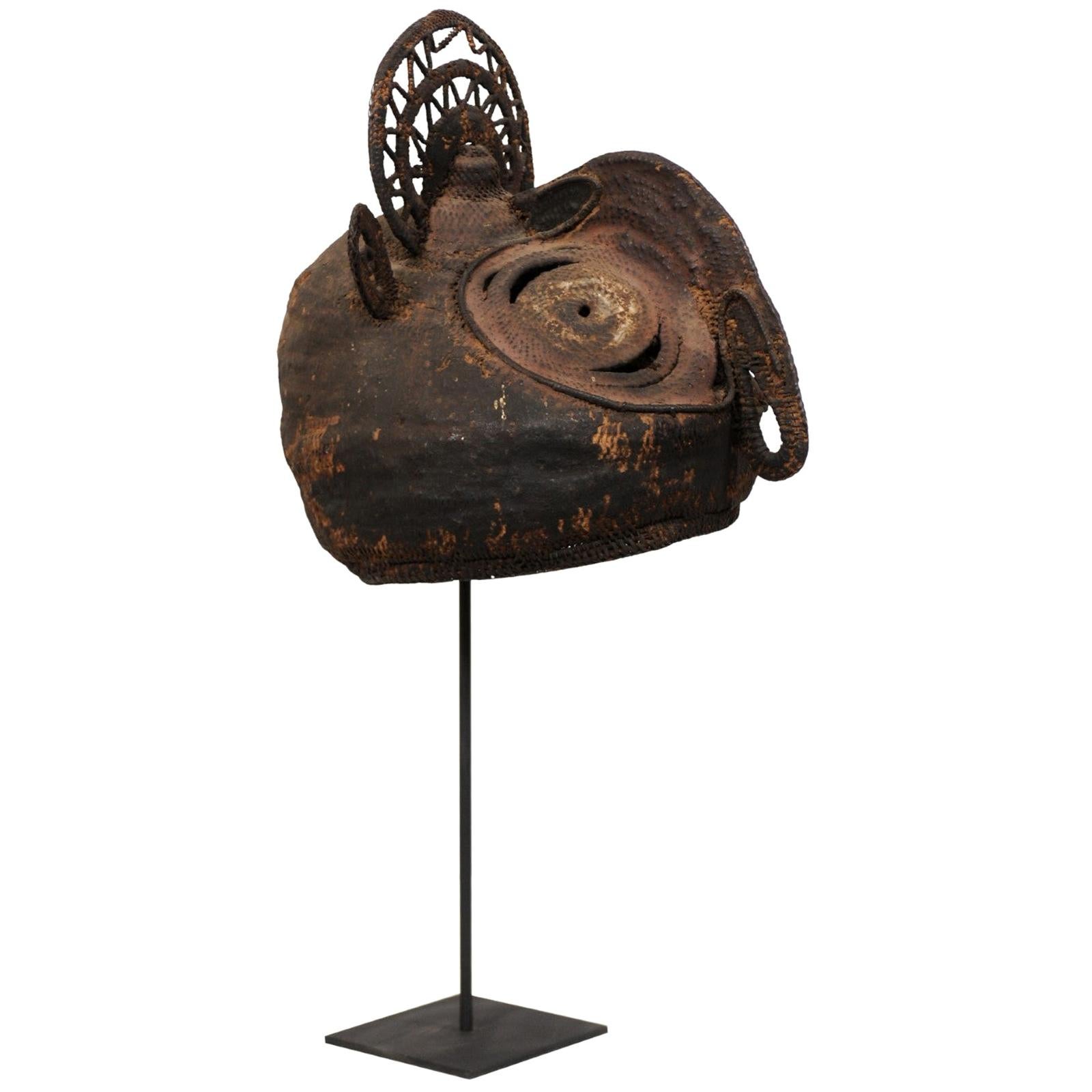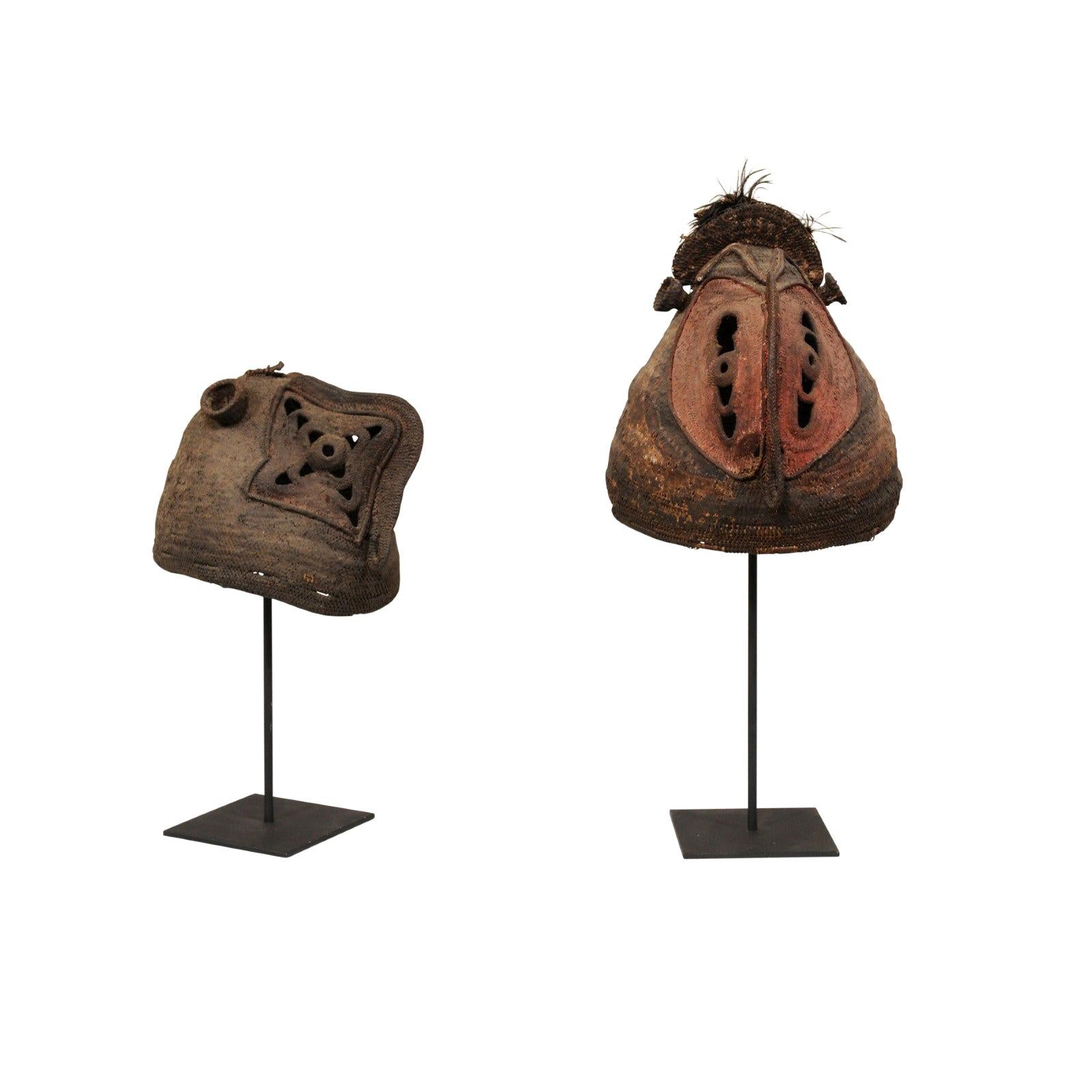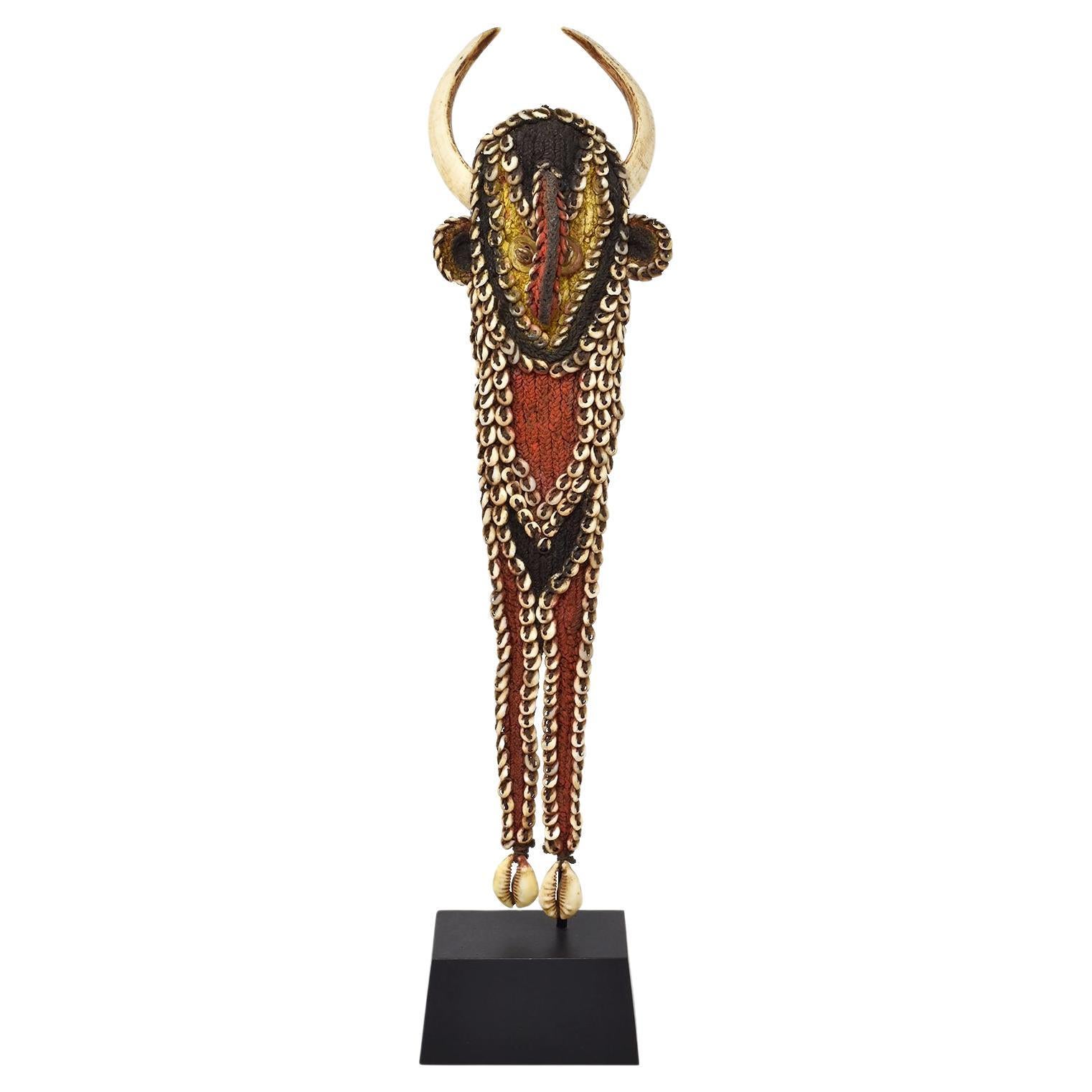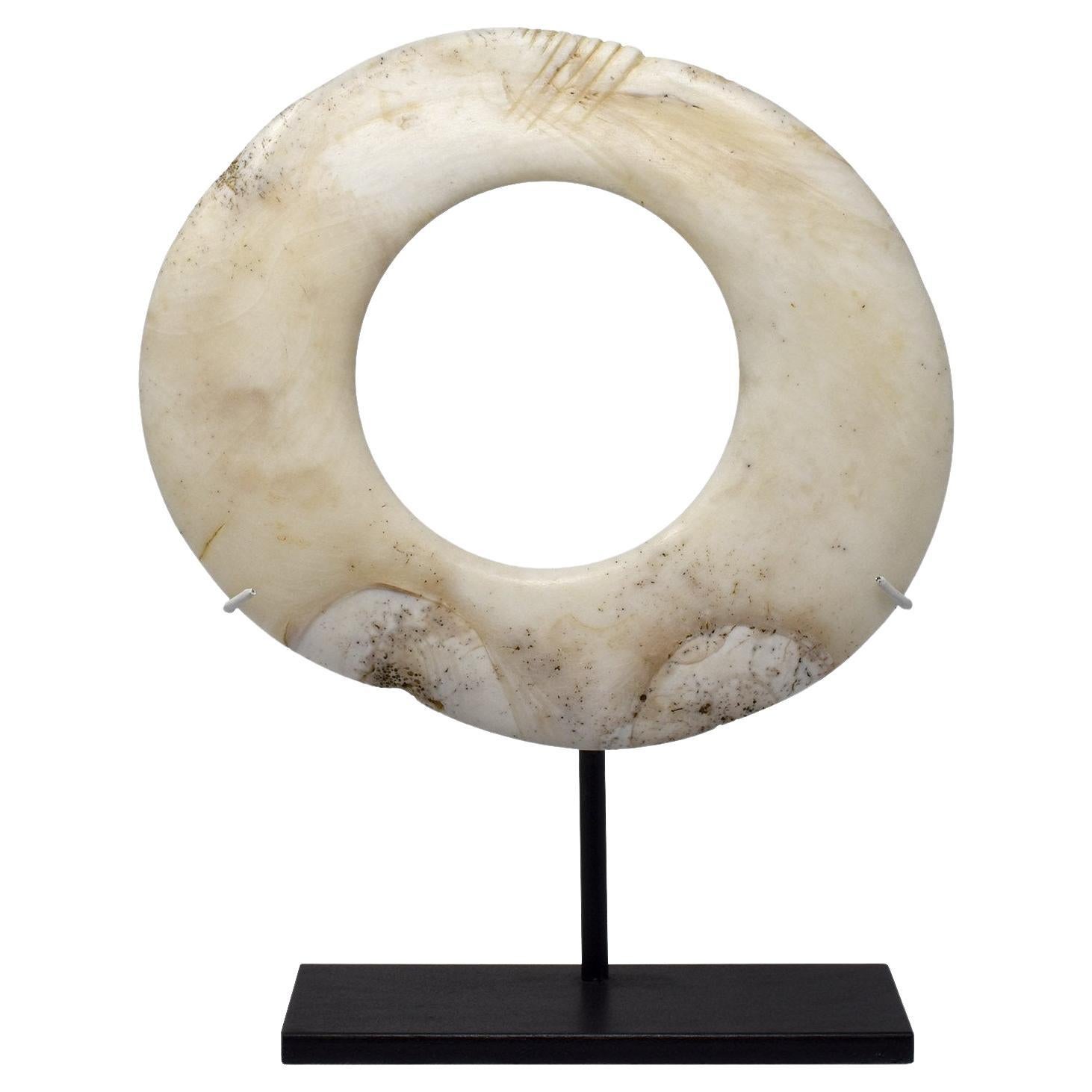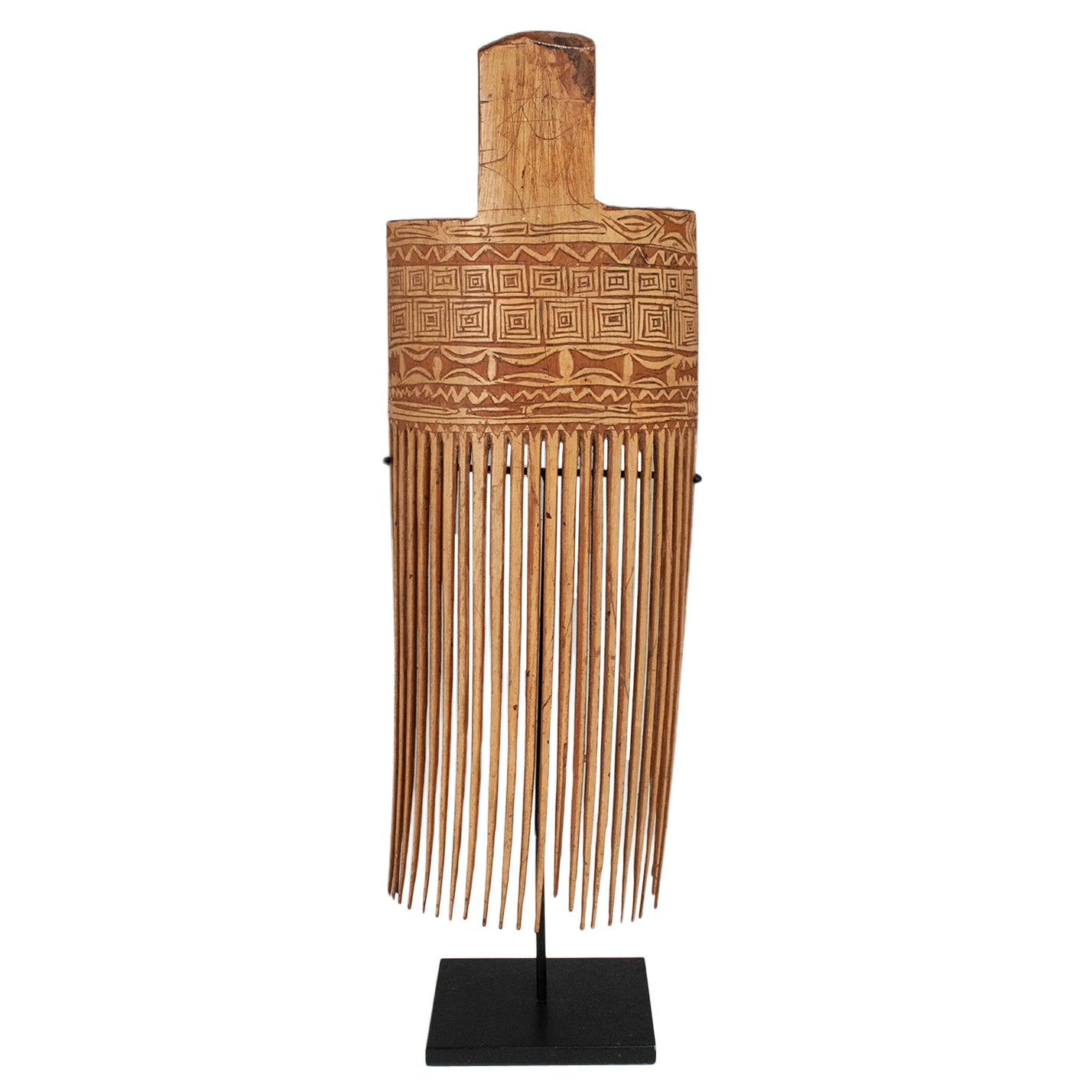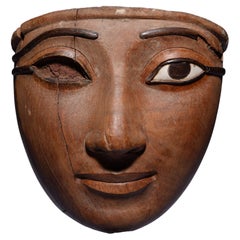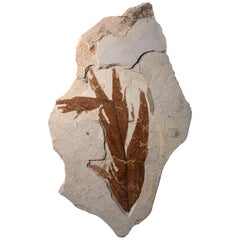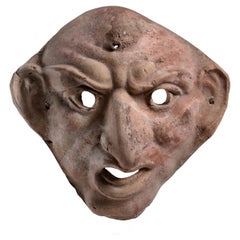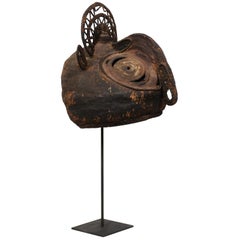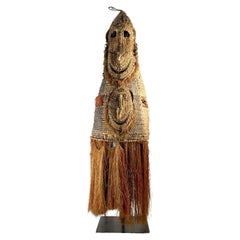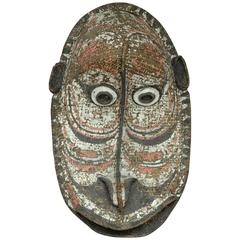
Large Basketry Gable Mask from Papua New Guinea
View Similar Items
Want more images or videos?
Request additional images or videos from the seller
1 of 8
Large Basketry Gable Mask from Papua New Guinea
About the Item
- Dimensions:Height: 43.71 in (111 cm)Diameter: 25.6 in (65 cm)
- Style:Tribal (Of the Period)
- Place of Origin:
- Period:
- Date of Manufacture:1910
- Condition:
- Seller Location:London, GB
- Reference Number:1stDibs: LU105225531003
About the Seller
5.0
Recognized Seller
These prestigious sellers are industry leaders and represent the highest echelon for item quality and design.
Established in 2008
1stDibs seller since 2014
100 sales on 1stDibs
Typical response time: 8 hours
Associations
LAPADA - The Association of Arts & Antiques DealersInternational Confederation of Art and Antique Dealers' AssociationsThe British Antique Dealers' Association
More From This SellerView All
- Exceptional Egyptian Sarcophagus MaskLocated in London, GBExceptionally Fine Wooden Sarcophagus Mask Third Intermediate Period, 21st Dynasty, circa 1069-945 BC. Acacia wood, rosewood, hippopotamus ivory Masterfully carved from a single piece of fine-grained hardwood, the present mask is characteristic of the most exquisite funerary art made during the 21st Dynasty, and was probably commissioned for a particularly high-ranking individual. The oval face displays a gently smiling mouth with full, outlined lips, furrows at the corners and a bow-shaped philtrum. The straight nose with rounded nostrils, the cheeks full and fleshy and the large, almond shaped eyes with heavy lids and tapering cosmetic lines, set below long, sweeping eyebrows. Social collapse across the Mediterranean in the Late Bronze Age meant that the 21st Dynasty in Egypt was a period of great turmoil. Trade routes were disrupted, governments collapsed, and mass migration occurred. Economic scarcity meant that traditional funerary practices in Egypt were also affected, with a lack of material and financial resources leading to the reuse of preexisting material. As a result, during the 21st Dynasty, 19th and 20th Dynasty coffins changed ownership rapidly and were heavily recycled for new purposes. Tombs were also unmarked allowing them to be shared by many people. These new practices brought forth a shift in the understanding of funerary paraphernalia. No longer important objects owned forever by the deceased, they were now simply seen as short-term transformative devices, whose symbolic and ritualistic meaning could be appropriated for others. However, paradoxically, the art of coffin-making also reached new heights during this period, and many of the richly dec- orated “yellow” coffins, characteristic of the 21st Dynasty, are remarkable works of art in their own right. Indeed, knowing that coffins were being reused throughout Egypt, the Egyptian élite set themself apart by commissioning lavish sarcophagi decorated with the images and texts meant to help guide them to the afterlife, and which would otherwise have adorned the tomb walls. As coffins were the chief funerary element which now identified the dead and allowed them a physical presence in the world of the living, their quality and appearance were of the utmost importance. The traditional coffin ensemble was made of three parts: a wooden mummy cover, which laid directly atop the mummy, an inner coffin, and an outer coffin, both made of a lid and case. Additional decorative elements, such as masks, were carved out separately and later glued or pegged to the lids. After the completion of the painted decoration, the sarcophagus was covered in a varnish to give it its yellow colour. Gilding was sometimes used for the coffins of the high priests’ families, notably on parts representing naked skin, such as the face mask. However, some of the élite tactically avoided gilding altogether as to ensure that their coffin would not be looted. When manufacturing the inner and outer coffins, particular attention was paid to the woodwork. Displaying the skill of the carpenter, this type of funerary art has largely remained unparalleled throughout Egyptian history. The principal wood used to craft the present mask is Acacia nilotica. The evergreen Egyptian acacia was considered sacred and said to be the tree of life, the birthplace of the god Horus, as well as symbolic of Osiris, the god of the dead and resurrection. The modelling of the face in the wood is superb, but the inlays also help mark this mask out as exceptional. Inlaid eyes and eyebrows were extremely rare and reserved to the finest and most expensive coffins. Traditionally, eyes were made of calcite, obsidian, or quartz, and eyebrows of coloured glass paste or bronze. Here, the pupils, eyebrows, and cosmetic lines are inlaid with Dalbergia melanoxylon, a rare type of wood which belongs to the rosewood genus. In antiquity, however, it was known as Ebony of the Pharaohs, from the Egyptian word “hbny”, meaning dark timber, because of its black, lustrous appearance. An extremely dense and hard wood requiring significant skill to work with, ebony was a luxury material highly coveted by the pharaohs themselves, to make furniture, decorative and funerary objects. The wood was imported with great effort from the southern Land of Punt, most likely modern Sudan, Ethiopia, Djibouti, and Eritrea, alongside other luxury goods such as gold and ivory. A magnificent ebony throne, recovered in the tomb of King Tutankhamun, illustrates the incredible aesthetic potential of this material and why it was so highly valued by Egyptian royalty. Only élite members of Egyptian society could have afford- ed Ebony of the Pharaoh inlays for their funerary mask. The sclerae on the present piece were once both inlaid with hippopotamus ivory. Whiter than elephant ivory, this type of ivory is also denser, and more difficult to carve. The use of this luxury material, reputed for its gleaming appearance, enhances the lifelikeness of the eyes. For the Egyptians, hippopotamus ivory was imbued with magic powers. The hippopotamus was indeed both feared and venerated due to its aggressive behaviour. Whilst the male hippopotamus was associated with danger and chaos, the female was benevolent and invoked for protection, especially of the house and of mothers and their children, through the hippopotamus goddess Tawaret. Thus, not only was hippopotamus ivory used as an inlay and to make practical objects, such as combs and clappers, but it was also used to make talismans like apotropaic wands or knives. Made during a time of scarcity where few could afford made-to-order coffins, the present mask could have only belonged to one of the highest-ranking individuals in society. Undoubtedly one of the finest Egyptian coffin...Category
Antique 15th Century and Earlier Egyptian Egyptian Figurative Sculptures
MaterialsFruitwood, Hardwood
- Large Leaf Fossil from the Green River FormationLocated in London, GBA large and beautifully preserved fossilised leaf from the Green River formation, a site which has brought forth some of the best-preserved fossi...Category
Antique 15th Century and Earlier North American Wall-mounted Sculptures
MaterialsOther
- Hellenistic Grotesque Theatre Mask of MaccusLocated in London, GBGrotesque theatrical mask of Maccus Late Hellenistic or Early Imperial period, circa 1st century B.C. – 1st century A.D., likely from Southern Italy. Terracotta with remains of pin...Category
Antique 15th Century and Earlier Italian Classical Roman Figurative Scul...
MaterialsTerracotta
- Petrified Wood Slice from ArizonaLocated in London, GBA large section of a petrified conifer tree trunk, (Araucarioxylon arizonicum) from Northern Arizona, dating to the Triassic period, circa 225 million years ago. Over hundreds of m...Category
Antique 15th Century and Earlier American Wall-mounted Sculptures
MaterialsQuartz
- Cross-Section from an Exceptional Lunar MeteoriteLocated in London, GBA piece of the moon - superb lunar meteorite gadamis 004 - Anorthosite 4.5 Billion y/o Among the rarest substances to be found on Earth, thi...Category
Antique 15th Century and Earlier Libyan Natural Specimens
MaterialsStone
- Sculptural Iron Meteorite from Morasko, PolandLocated in London, GBIron Meteorite from Morasko, Poland Circa 4.55 Billion y/o Iron, IAB-MG A sculptural iron meteorite dating to the formation of the solar system, s...Category
Antique 15th Century and Earlier Polish Natural Specimens
MaterialsIron
You May Also Like
- Abelam "Yam Festival" Mask on Stand from Papua New GuineaLocated in Atlanta, GAA Papua New Guinea yam festival mask of a horn-billed bird from the mid-20th century. This vintage ceremonial mask, also referred to as a baba mask, originates from the Abelam people...Category
Mid-20th Century Papua New Guinean Tribal Tribal Art
MaterialsIron
- Pair of Papua New Guinea "Yam Festival" MasksLocated in Atlanta, GAA pair of Papua New Guinea yam festival masks from the mid 20th century. These vintage ceremonial masks, also referred to as a baba mask, originate from the Abelam people, along the ...Category
Mid-20th Century Papua New Guinean Tribal Tribal Art
MaterialsIron
$5,620 / set - A TRIBAL Ritual SCULPTURE MASK TUNIC Middle SEPIK, Papua New Guinea, 1950Located in PARIS, FRAn exceptional, old and authentic, adornment or tunic or mask -full!- of Oceanian ceremony, with a double or split figure, on its very beautiful contemporary base in raw steel, Shama...Category
Vintage 1950s Papua New Guinean Tribal Figurative Sculptures
MaterialsMetal
- Old Papua New Guinea Ancestral Standing FigureLocated in Rochester, NYPapua New Guinea standing male ancestral figure, hand carved from a single piece of wood. Beautifully aged old pigmented surface with finely decorated facial features and shell eyes....Category
Mid-20th Century Papua New Guinean Tribal Figurative Sculptures
MaterialsShell, Wood
- Pair of Oceanic War Shields on Stands from Papua New GuineaLocated in Atlanta, GAA pair of Papua New Guinea wooden shields on custom stands from the mid 20th century. These oceanic war shields were not only created for protecting oneself for tribal warfare, but also in ancestral and ritual worship. They are adorn in various motifs, coloring and symbolism, intended to protect the carrier from magic and bring fear to the opponent. The shorter shield is from the Mendi area within the Southern Highlands. The taller shield originates from the Melpa tribe of the Western Highlands (Mount Hagen and Wahgi Valley), an area which was not discovered by the outside world until three Australian gold prospectors entered the region during their explorations in 1934. These shields are displayed upright on a custom black iron stand, with the tallest of the set standing at a height of over 5.5 ft tall. This pair of Papua New Guinea shields...Category
20th Century Papua New Guinean Tribal Tribal Art
MaterialsIron
- Pair of Massim Canoe Splash Boards from Papua, New GuineaLocated in Atlanta, GAA pair of decoratively carved wood splash boards from the southeastern region of Papua, New Guinea, presented on custom stands. This pair of vintage tribal boards have been carved fr...Category
Mid-20th Century Papua New Guinean Mounted Objects
MaterialsIron
Recently Viewed
View AllMore Ways To Browse
Antique Gables
Antique Gable
Papua New Guinea Wood
New Guinea Carved
Papua New Guinea Antique
Rattan Head
Monumental Wood Head
Tribal New Guinea Carved
Antique Furniture New South Wales
New Guinea Mask
Mens Canes
Papuan Mask
Sepik River
Sepik Art
River Cane
Tribal Mask Papua New Guinea
Arte Tribal
Thomas Heatherwick
